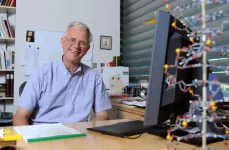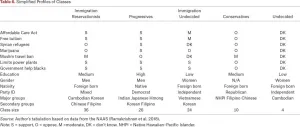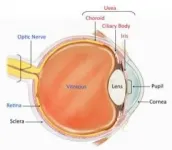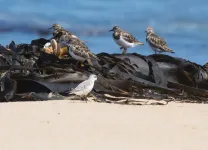(Press-News.org) Bdelloid rotifers are multicellular animals so small you need a microscope to see them. Despite their size, they're known for being tough, capable of surviving through drying, freezing, starvation, and low oxygen. Now, researchers reporting in the journal Current Biology on June 7 have found that not only can they withstand being frozen, but they can also persist for at least 24,000 years in the Siberian permafrost and survive.
"Our report is the hardest proof as of today that multicellular animals could withstand tens of thousands of years in cryptobiosis, the state of almost completely arrested metabolism," says Stas Malavin of the Soil Cryology Laboratory at the Institute of Physicochemical and Biological Problems in Soil Science in Pushchino, Russia.
The Soil Cryology Lab specializes in isolating microscopic organisms from the ancient permafrost in Siberia. To collect samples, they use a drilling rig in some of the most remote Arctic locations.
They've previously identified many single-celled microbes. There also has been a report of a 30,000-year-old nematode worm. Mosses and some plants also have been regenerated after many thousands of years trapped in the ice. Now, the team adds rotifers to the list of organisms with a remarkable ability to survive, seemingly indefinitely, in a state of suspended animation beneath the frozen landscape.
Rotifers had been reported to survive up to 10 years when frozen, based on earlier evidence. In the new study, the researchers used radiocarbon-dating to determine that the rotifers they recovered from the permafrost were about 24,000 years old.
Once thawed, the rotifer, which belongs to the genus Adineta, was able to reproduce in a clonal process known as parthenogenesis. To follow the process of freezing and recovery of the ancient rotifer, the researchers froze and then thawed dozens of rotifers in the lab.
The studies showed the rotifers could withstand the formation of ice crystals that happens during slow freezing. It suggests they have some mechanism to shield their cells and organs from harm at exceedingly low temperatures.
"The takeaway is that a multicellular organism can be frozen and stored as such for thousands of years and then return back to life--a dream of many fiction writers," Malavin says. "Of course, the more complex the organism, the trickier it is to preserve it alive frozen and, for mammals, it's not currently possible. Yet, moving from a single-celled organism to an organism with a gut and brain, though microscopic, is a big step forward."
It's not yet clear what it takes to survive on ice for even a few years and whether the leap to thousands makes much difference, he says. That's a question that requires further study. The researchers say they'll continue exploring Arctic samples in search of other organisms capable of such long-term cryptobiosis.
Ultimately, they want to learn more about the biological mechanisms that allow the rotifers to survive. The hope is that insights from these tiny animals will offer clues as to how better to cryo-preserve the cells, tissues, and organs of other animals, including humans.
INFORMATION:
This work was supported by Russian Foundation for Basic Research, the National Science Foundation, and the U.S. Department of Energy, Office of Science, Office of Biological and Environmental Research, Genomic Science Program.
Current Biology, Shmakova et al.: "A Living Bdelloid Rotifer Recovered from 20,000 Year Old Arctic Permafrost" https://www.cell.com/current-biology/fulltext/S0960-9822(21)00624-2
Current Biology (@CurrentBiology), published by Cell Press, is a bimonthly journal that features papers across all areas of biology. Current Biology strives to foster communication across fields of biology, both by publishing important findings of general interest and through highly accessible front matter for non-specialists. Visit http://www.cell.com/current-biology. To receive Cell Press media alerts, contact press@cell.com.
The aurora borealis, or northern lights, that fill the sky in high-latitude regions have fascinated people for thousands of years. But how they're created, while theorized, had not been conclusively proven.
In a new study, a team of physicists led by University of Iowa reports definitive evidence that the most brilliant auroras are produced by powerful electromagnetic waves during geomagnetic storms. The phenomena, known as Alfven waves, accelerate electrons toward Earth, causing the particles to produce the familiar atmospheric light show.
The study, published online June 7 in the journal Nature Communications, concludes a decades-long quest to demonstrate experimentally the physical mechanisms for the acceleration of electrons by Alfven waves under ...
What The Study Did: In this study, short-term effectiveness of the first dose of the BNT162b2 (BioNTech/Pfizer) vaccine against SARS-CoV-2 infection 13 to 24 days after immunization in a real-world setting was assessed.
Authors: Gabriel Chodick, Ph.D., of the Maccabi Institute for Research & Innovation, Maccabi Healthcare Services, in Tel Aviv, Israel, is the corresponding author.
To access the embargoed study: Visit our For The Media website at this link https://media.jamanetwork.com/
(doi:10.1001/jamanetworkopen.2021.15985)
Editor's Note: Please see the article for additional information, including other authors, author contributions and affiliations, ...
What The Study Did: Among children with a COVID-19 diagnosis, researchers in this study examined what other conditions are common and which are associated with severe COVID-19 illness.
Authors: Lyudmyla Kompaniyets, Ph.D., of the U.S. Centers for Disease Control and Prevention in Atlanta, is the corresponding author.
To access the embargoed study: Visit our For The Media website at this link https://media.jamanetwork.com/
(doi:10.1001/jamanetworkopen.2021.11182)
Editor's Note: Please see the article for additional information, including other authors, author contributions and affiliations, conflict of interest and financial disclosures, ...
What The Study Did: Researchers analyzed conversations on public Facebook groups to explore automated misinformation.
Authors: John W. Ayers, Ph.D., M.A., of the University of California, San Diego, in LaJolla, is the corresponding author.
To access the embargoed study: Visit our For The Media website at this link https://media.jamanetwork.com/
(doi:10.1001/jamainternmed.2021.2498)
Editor's Note: The article includes conflict of interest and funding/support disclosures. Please see the article for additional information, including other authors, author contributions and affiliations, conflict of interest and financial ...
La Jolla, Calif. (June 07, 2021) -- "The coronavirus pandemic has sparked what the World Health Organization has called an 'infodemic' of misinformation," said Dr. John W. Ayers, a scientist who specializes in public health surveillance. "But, bots --like those used by Russian agents during the 2016 American presidential election-- have been overlooked as a source of COVID-19 misinformation."
A new study published in JAMA Internal Medicine led by Dr. Ayers, Co-Founder of the Center for Data Driven Health and Vice Chief of Innovation within the Division of Infectious Diseases ...
While DNA provides the genetic recipe book for biological form and function, it is the job of the body's proteins to carry out the complex commands dictated by DNA's genetic code.
Stuart Lindsay, a researcher at the Biodesign Institute at ASU, has been at the forefront of efforts to improve rapid DNA sequencing and has more recently applied his talents to explore the much thornier problem of sequencing protein molecules, one molecule at a time.
In a new overview article, Lindsay's efforts are described along with those of international colleagues, who are applying a variety of innovative strategies for protein sequencing at the single-cell, and even single-molecule ...
The recent attacks against Asian Americans have put Asians in the U.S. in the spotlight. Many of the victims are first-generation immigrants in ethnic communities, while those rallying for the victims are second-generation Asian Americans. A new Dartmouth study explores who Asian Americans are today and the range of identities this category encompasses.
The study, by END ...
An international coalition of eye researchers used machine learning to develop classification criteria for 25 of the most common types of uveitis, a collection of over 30 diseases characterized by inflammation inside the eye. Together, these diseases are the fifth leading cause of blindness in the United States. The Standardization of Uveitis Nomenclature (SUN) Working Group, funded by the National Eye Institute (NEI), published its classification criteria in the American Journal of Ophthalmology. NEI is part of the National Institutes of Health.
"In the past, clinical research in the field of uveitis has been hampered by the lack of widely-accepted ...
Lead is a toxic metal, and its widespread use has led to significant environmental pollution and public health problems in many parts of the world. This has led the WHO to include it on a list of ten chemicals that cause serious health problems. However, lead poisoning continues to affect many population groups. A study published today in open access in the journal Environment International found high levels of lead in indigenous people in Peruvian Amazonia living near areas where oil extraction takes place. The research was led by Cristina O'Callaghan-Gordo, a professor and researcher in Health Sciences Studies at the Universitat Oberta de Catalunya (UOC) and the Barcelona ...
As Australia officially enters winter, UniSA ecologists are urging coastal communities to embrace all that the season brings, including the sometimes-unwelcome deposits of brown seaweed that can accumulate on the southern shores.
While tidal seaweed (or sea wrack) may seem unsightly - especially at beach-side tourist destinations - new research from the University of South Australia shows that it plays a vital role for many migratory seabirds and should be protected.
In the first study of its kind, UniSA researchers show that beach-cast seaweed provides shelter, ...





